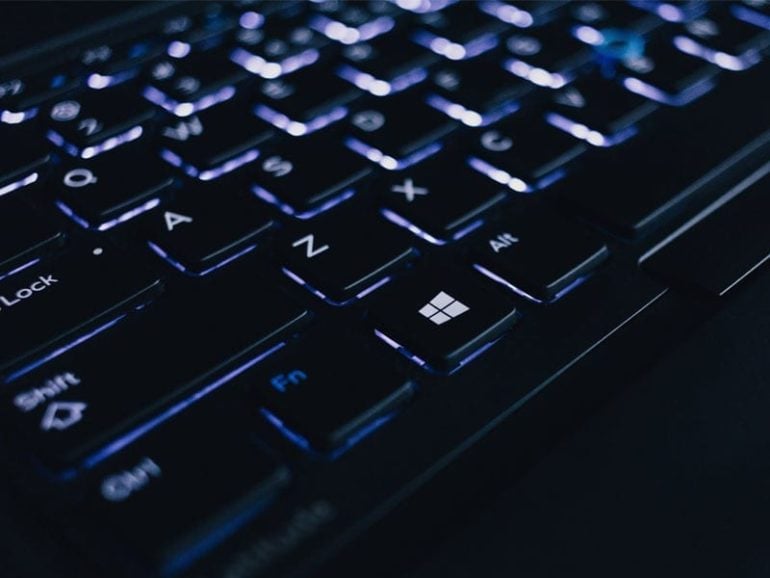Most people don’t bother memorizing keyboard shortcuts because they rely on their mouse. But certain Windows keyboard shortcuts can save you a lot of time and effort, especially if you’re doing repetitive tasks. Below are some Windows keyboard shortcuts to help you be more productive.
Keyboard Shortcuts to Navigate Windows
Most tasks that require you to move your mouse around can also be accomplished with hotkeys. Save a few mouse clicks by using the Windows keyboard shortcuts below.
- Windows key (⊞) + D to access your desktop. You don’t need to minimize all your windows and applications to see your desktop. After you use this keyboard shortcut to look at your desktop, you can use it again to bring your applications back to where they were before.
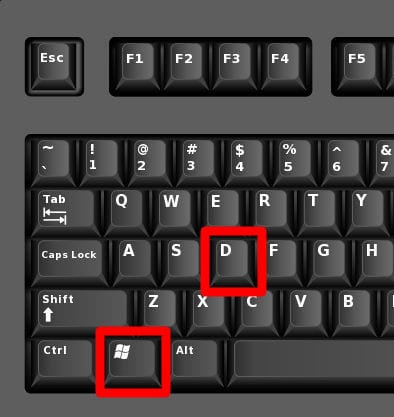
- Windows + Comma to peek at your desktop. Use this keyboard shortcut to quickly see your desktop. Once you let go of the comma key, your windows and applications will return to where they were before.
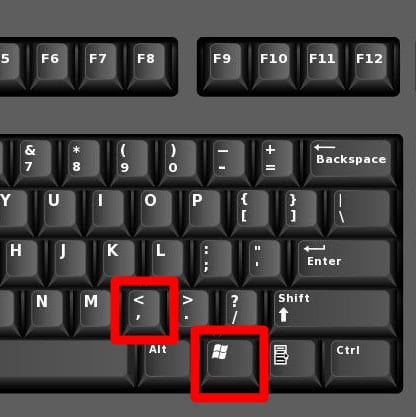
- Windows + down arrow to minimize the current window. Use this shortcut to hide your current window or application in the taskbar. You can then bring it back up by hitting the Windows + arrow up keys.
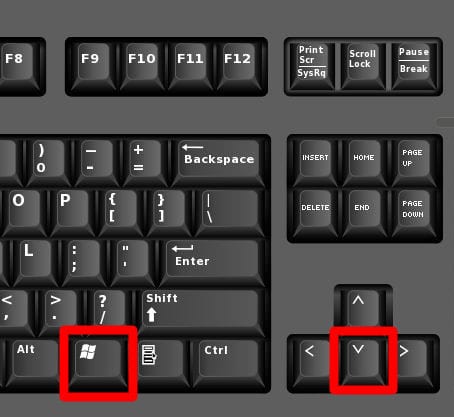
- Windows + M to minimize all open windows. Use this keyboard shortcut if you’re tired of seeing all your windows and applications. Once you use this keyboard shortcut, you will have to manually click on your applications and windows to bring them back up.
- Windows + E to open File Explorer. If you don’t have File Explorer pinned to your taskbar, this is another way to access it.
- Windows + L to lock your computer. This will immediately bring you back to your sign-in screen. Once you sign in, your applications and windows will be right where they were before.
- Windows + S – Open the Windows search bar. You can type in a search term and search your apps, documents, settings, or email, and more
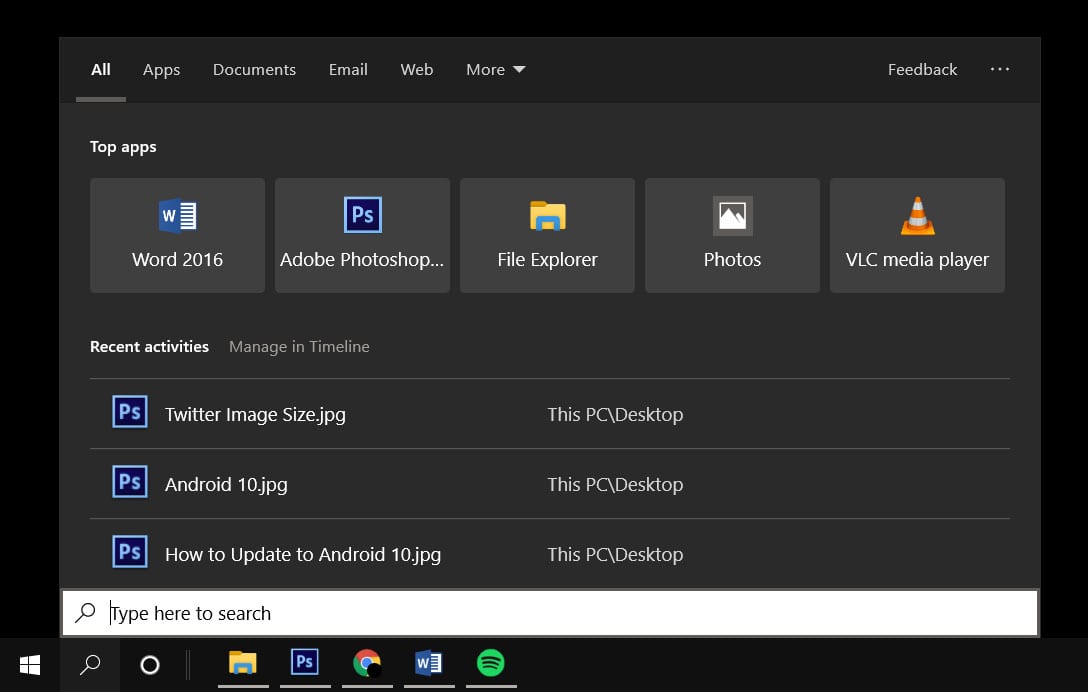
- Windows + T to scroll through taskbar. Use this keyboard shortcut to see all the windows you have opened across all your applications. From there, you can use your arrow keys to navigate or open a program by hitting Enter when it has a white box around it.
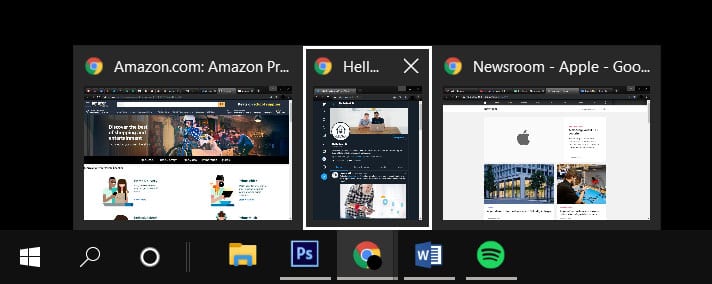
- Windows + number to open an app on the taskbar. Use this keyboard shortcut to open an application based on the number specified. If you have Google Chrome as the third item in your taskbar, for example, you can open it by hitting the Windows + 3 keys.
- Alt + Tab to switch between applications. If you have more than two programs running, hold down the Alt button, then press the Tab button. This will open up the Task Switcher window. From here, you can navigate between apps by pressing the Tab button. You can also close apps by clicking the red X in the upper-right corner of each app.

- Shift + F10 to open contextual menu. Use this keyboard shortcut in place of right-clicking with your mouse. It opens up a contextual menu, with the options varying depending on what kind of program you have open.
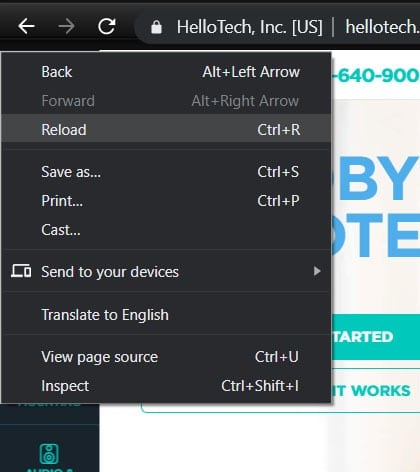
Once you are in the contextual menu, you’ll be given options to Restore, Move, Minimize, Size, Maximize, or Close a window. Some options are grayed out depending on what kind of program you are using.
How to Close a Window with Shortcuts
To close a window, you would normally move your cursor to the X or Exit button on a program and click on it using a mouse. You can accomplish the same task on a keyboard with the following shortcuts.
- Alt + F4 to force quit a program. Use this keyboard shortcut to force an application to quit. This is especially helpful when a program becomes unresponsive.
- Ctrl + F4 to close a window without exiting the application. Use this keyboard shortcut when you want to close one window without quitting the application. You can also use Control + W to do the same task, but it will only close tabs in Google Chrome.
Browser Shortcuts
If you have too many tabs open, you’ll have to click on the tab first before you can see the Exit button. No matter how many you have open, these shortcuts will make it easier to open and close them.
- Ctrl + T to open and go to a new tab. New tabs will open to whatever home screen you have set.
- Ctrl + W to close the current tab. This keyboard shortcut will also close pinned tabs.
- Ctrl + Shift + T to reopen a previously closed tab. Did you just close out of a tab on accident? When you use this keyboard shortcut, your reopened tabs will appear in the order that you closed them. For example, if you last closed a webpage on the third tab, it will reopen on the third tab.
How to Switch Between Tabs in Chrome
If you’re the type of person that always has too many tabs open, these keyboard shortcuts will make surfing the web a lot easier. Another option is to install a tab manager extension on your browser, which lets you filter and search previously opened tabs.
- Ctrl + Tab to open the next tab. Use this keyboard shortcut to open the tab to the right of the one you currently have open. You can also use Ctrl + Shift + Tab to move through the tabs the opposite way.
- Ctrl + 1 to 8 to go to tabs in order. Hold down the Ctrl key and press 1 to access the first tab, or 2 to access the second tab, and so on. No matter how many tabs you have open, you can also use Ctrl + 9 to jump to the last open tab to the far right.
Other Helpful Windows Keyboard Shortcuts
These shortcuts don’t have anything to do with navigation, the Windows system, or cycling through open tabs, but they are helpful for common Windows tasks.
- Ctrl + Alt + Delete to access lock screen. Use this keyboard shortcut to get to the Task Manager, which is handy when you need to force-quit an application. You can also lock your device, switch users, sign out, or change your password from here.
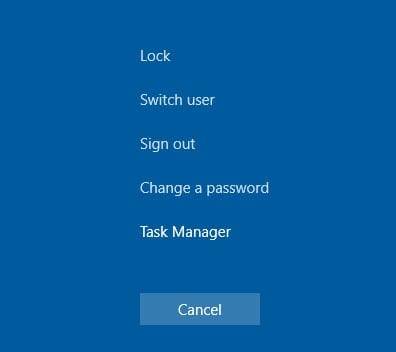
- F2 to rename selected file or folder. Instead of clicking on a file and them waiting and clicking again, use this keyboard shortcut to quickly give any file or folder a new name.
- F5 to reload browser tab. Use this keyboard shortcut when browsing to refresh a page without needing to click the reload button. You can also use Control + R to accomplish the same thing in any browser.
- Ctrl + D to delete a file of folder. Use this keyboard shortcut to instantly move any file or folder to the recycle bin. You can also use Shift + Delete to delete a file. You will have the chance to confirm the action via a pop-up box. If you click Yes, the file will be permanently deleted.
Master these keyboard shortcuts, and you’ll be a keyboard ninja in no time. If you want to learn how to take a screenshot on Windows with keyboard shortcuts, check out our previous article here.
